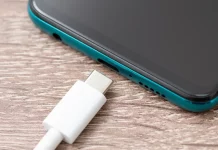If you ever find yourself in a remote area with no cell service, you might want to look into T-Mobile’s T-Satellite, a satellite-based connectivity service developed in partnership with SpaceX’s Starlink. The service comes bundled with T-Mobile’s premium plans but can also be used with other carriers — yes, even if you’re on AT&T or Verizon.
For users outside T-Mobile’s network, T-Satellite costs $10 per month. However, accessing it isn’t as simple as installing an app; you’ll need a satellite-compatible smartphone. The list of supported devices includes the iPhone 13 and newer Apple models, Google Pixel 9 and 10, as well as several Motorola and Samsung phones. Despite leaving beta earlier this year, many users who have tested T-Satellite report a frustrating experience — and not for lack of trying.
Why Are Users Unhappy with T-Satellite?
A number of Reddit threads detail mixed user experiences on the T-Satellite network. Some report that it worked fine for sending texts while driving through dead zones or camping off-grid. Others, however, describe frequent connection failures and painfully slow link-up times.
One Reddit user, Peaches_offtrail, shared that it would “take a very, very long time for my phone to connect to a satellite, if it could at all,” and that even when it did connect, coverage often dropped mid-text. For many adventurers, this kind of inconsistency is unacceptable — which is why some prefer dedicated satellite messengers like Garmin’s inReach.
Battery life is another major concern. Users say the service drains power quickly, especially when repeatedly trying to establish a connection. For anyone miles away from a power source, that’s more than an inconvenience — it’s a potential safety hazard. A satellite link is useless if your phone dies before help arrives.
Some Light at the End of the Tunnel
Despite its rocky start, T-Satellite is steadily improving. Since launch, T-Mobile has expanded its functionality: multimedia messaging is now supported, allowing users to send photos and videos alongside texts. More recently, the network began supporting popular off-grid apps like AllTrails, CalTopo, AccuWeather, onX, and even X (formerly Twitter). These additions make T-Satellite more useful for outdoor enthusiasts who rely on navigation and weather data in isolated areas.
The list of compatible smartphones is also growing, now including the ultra-thin iPhone Air, among others.
Although T-Satellite still struggles with reliability, T-Mobile’s ongoing efforts to strengthen the service show promise. When it works, it’s a lifeline for travelers, hikers, and explorers venturing far beyond cell coverage — and at $10 per month, it’s a relatively affordable safety net. Still, if reliability is your top priority, you might want to wait until the service matures further before depending on it in critical situations.





